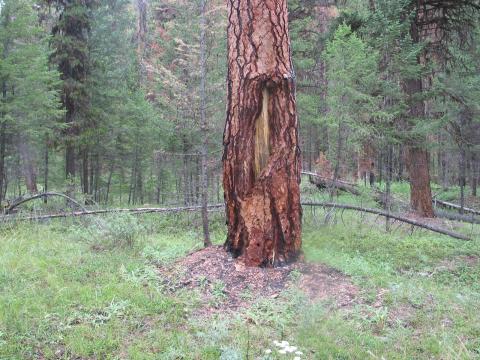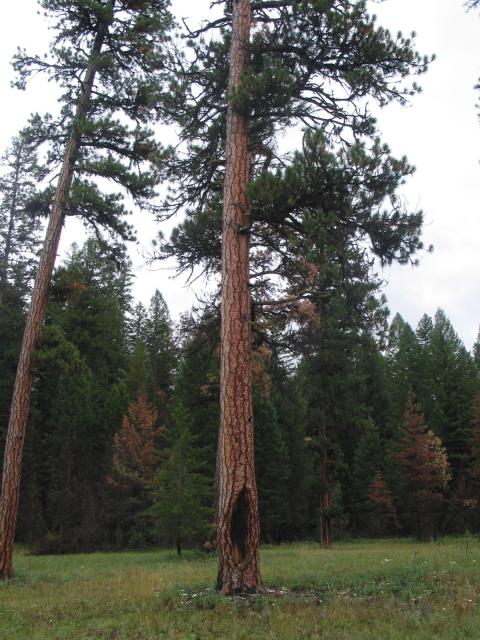Assessing ponderosa pine mortality in the Bob Marshall Wilderness Area after successive fires Over 14 Years
Decades of fire exclusion across western US landscapes has resulted in altered fire regimes and atypical fuel conditions. After the lightning-caused Little Salmon wildfire swept through the center of the Bob Marshall Wilderness in 2003, a comprehensive study was implemented along the South Fork of the Flathead River corridor to assess post-fire survival of iconic, relict ponderosa pine trees that are renowned in this part of the wilderness area. These trees are ancient (>400 years old) and many of them have multiple fire scars and Native American bark-peeling scars. This area had not seen fire for decades, yet prior to European settlement, these forests experience frequent, low severity fires. Part of the study area also experienced another fire in 2011. Results from this research can be used to plan future wildfire management in wilderness areas with substantial ponderosa pine forests.
Beginning with the first sampling effort in 2004, the DBH (diameter at breast height) of all large diameter ponderosa pine (>20 inch DBH) were measured along with visual assessments of health status(live, unhealthy, sick, dead) and the presence of fire or Native American bark-peeling scars. These trees were also evaluated in 2005, 2009, 2014, and finally, 2017. Starting in 2009, ponderosa pine trees from 12 to 20 inches DBH were also added to the study. The percent fire-caused mortality were summarized by DBH class (20 in DBH) and by scarred and unscarred trees over the four years of evaluation.
We found that mortality rates were originally overestimated in the 2004 measurements among the larger trees, and that despite the excessive fuel buildup prior to 2003, mortality rates remained low (<21%) throughout the sampled areas. In fact, the larger trees (>20 inches DBH) experienced only 8% fire-caused mortality. Many of these large relict ponderosa pines continue to thrive in the sampled areas, despite the continued burning from wildfires in high post-fire fuel loading areas from fire-caused mortality of other tree species.
Results from this study provide evidence that wildfires may provide a unique opportunity to restore fire to fire-prone ponderosa pine ecosystems that have had fires excluded from them for a long time.





